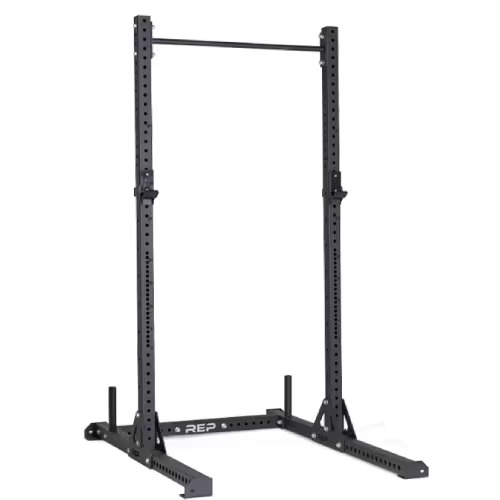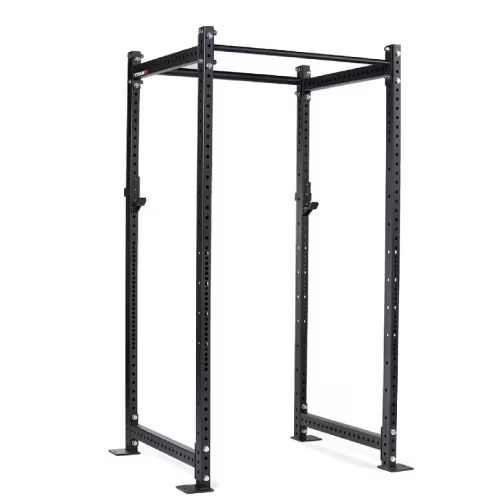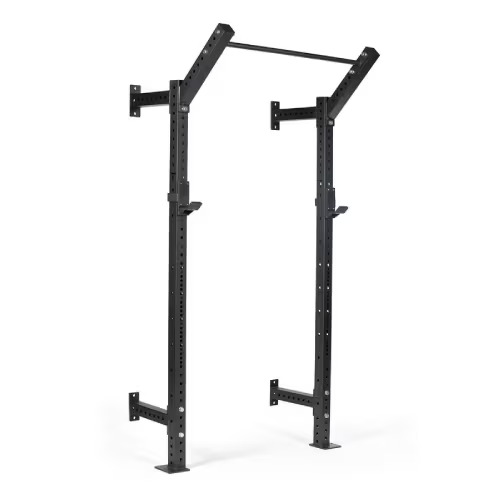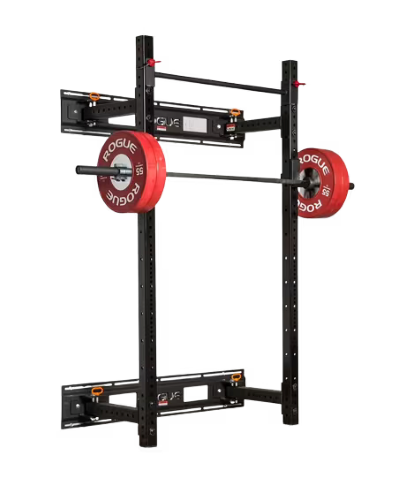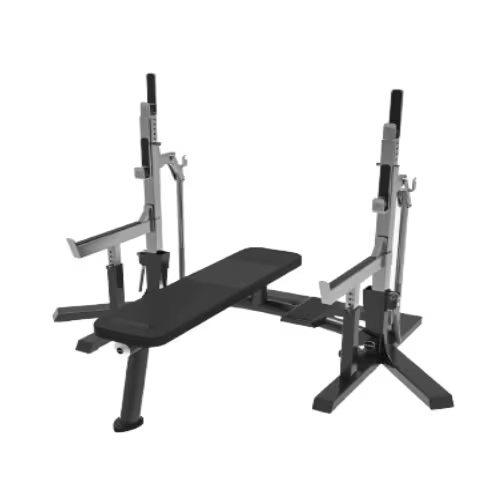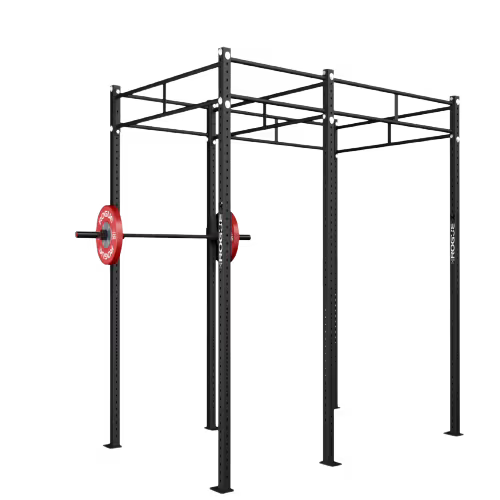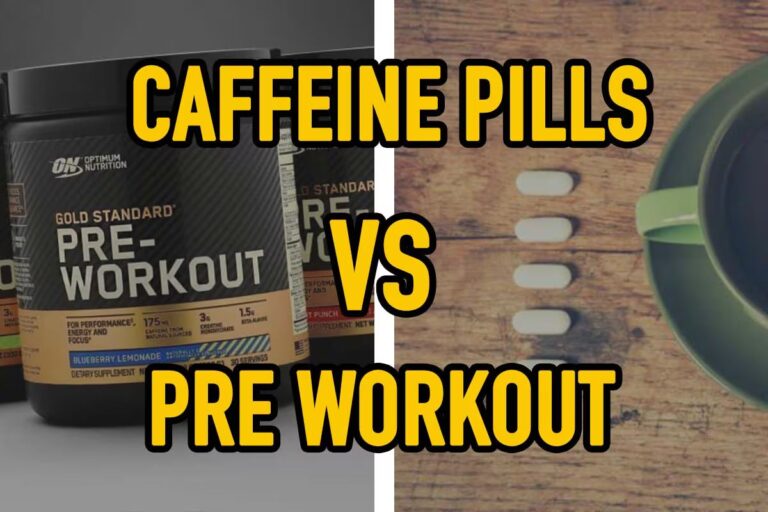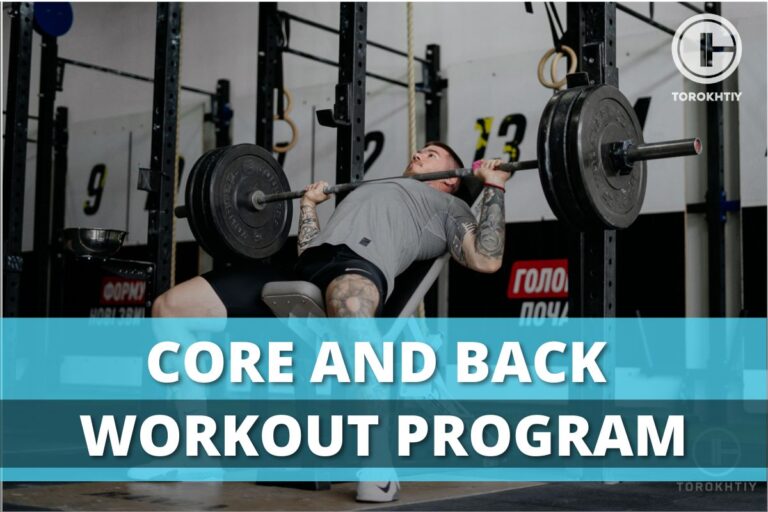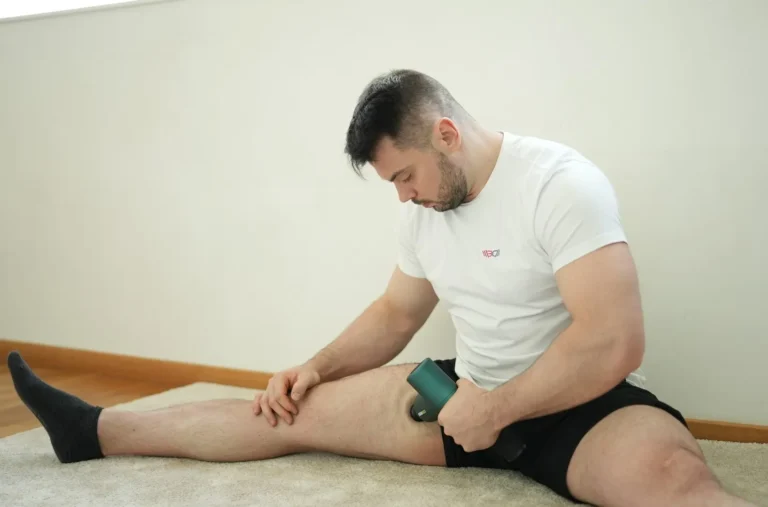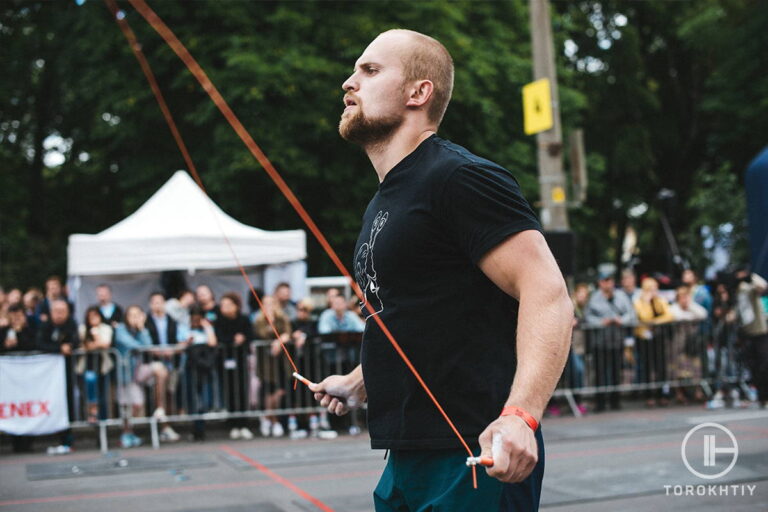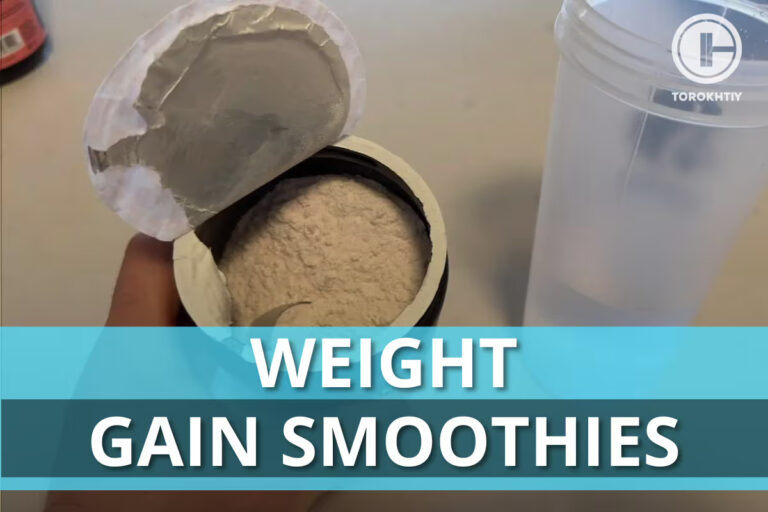How Much Is a Squat Rack – Let’s Discuss!
Have you ever wanted to build a home gym but thought that the equipment was too expensive? Or do you simply want to know how much you would have to invest if you’re in the process of building one? If yes, then this article is just for you as we’re going to be discussing how much does a squat rack cost and if it’s better to buy a new or used one.
We will also be discussing the other types of squat racks on the market and helping you choose which one to get depending on your unique needs.
Let’s get started.
How Much Is a Squat Rack?
The prices of squat racks depend on their model – the cheapest ones start at around $200, while the most expensive can go up to $10,000. What type you choose to go for depends entirely on your needs and budget, but the average price is around $500-700 for a good rack.
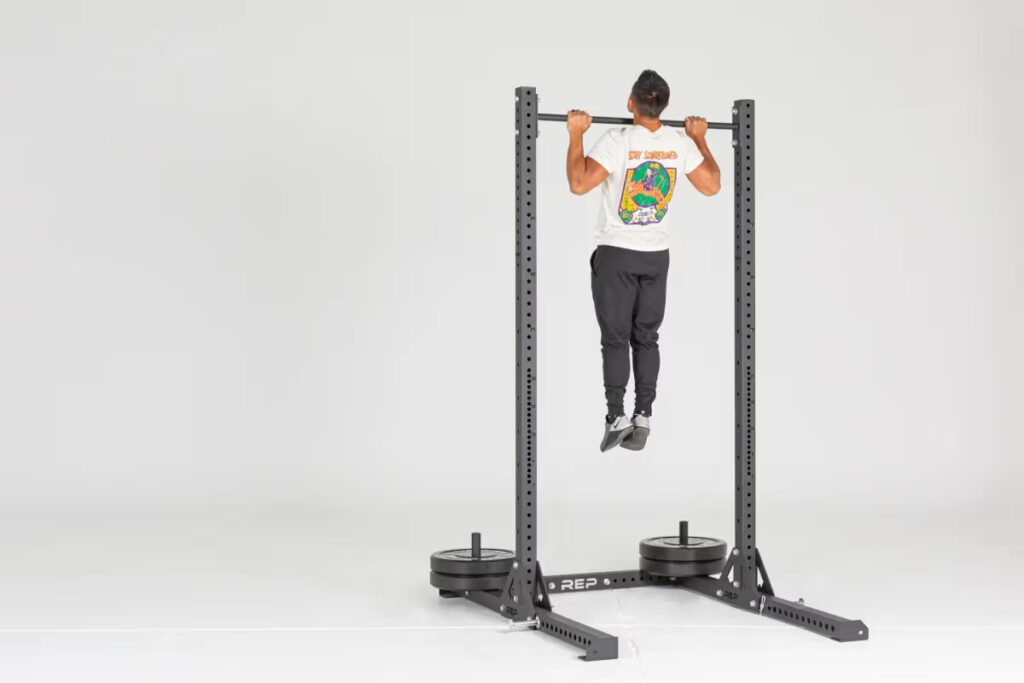
How Much Do Squat Racks Cost?
Most people who want to have a home gym have probably already figured out that one of the biggest investments they will have to make is in their squat rack. Typically, the cost of squat rack can vary between $200 and $10,000 depending on its style and the quality of its build. The average price is around $1000, and the higher the quality of steel and the bigger the rack is, the more it will cost.
Along with that, squat racks vary in styles – all the way from simple squat stands to a full rack, and we will go over many of them in the below paragraphs. That way, you will be able to make the best choice for you, depending on your needs and your budget.
1. Squat Rack (From $200 to $2000 for the Premium Ones)
Squat racks or squat stands are the most basic types of racks on the market. They consist of only two columns connected with a small base and are solely used so that you can get the weight off the ground when performing front and back squats, along with some other lifts.
Because of that, the squat rack price is the lowest one on this list – after all, they’re the most bare-bones pieces of equipment that you can find that serve this kind of purpose. Squat racks are super popular with Olympic lifters who don’t need a rack to perform other movements and are happy to settle with that kind of model.
Along with that, for most people, squat racks are the preferred choice because they happen to be the cheapest one, and if you just need the equipment for 2-3 sessions a week at home, then it’s more than perfect.
Squat Rack We Recommend: Rep Fitness Sr-4000
The SR-4000 Squat Rack is perfect for any gym as it’s super versatile and stable, and it can be just as useful as a full-on power rack. It’s made from heavy-duty gauge steel and comes with attachments for dips and pull-ups so that you can use it for a full-body workout. Along with that, it’s easy to put together and can be easily moved if need be.
2. Power Rack (From $400 to $3000 for the Premium Ones)
Power racks are the big boys in our list today, as they’re what you probably imagine when you think of old-school powerlifting and heavy weightlifting. They come with connected four vertical beams, which offers more stability and enables you to lose a lot more rack attachments without having to move away from the one you’re currently using.
On the downside, they tend to take up a lot more space and are more difficult to move if needed. Because they’re big in size, the power rack cost is much higher than the one of a squat rack and can seem a little too expensive, especially if you’re not planning on using it on a daily basis.
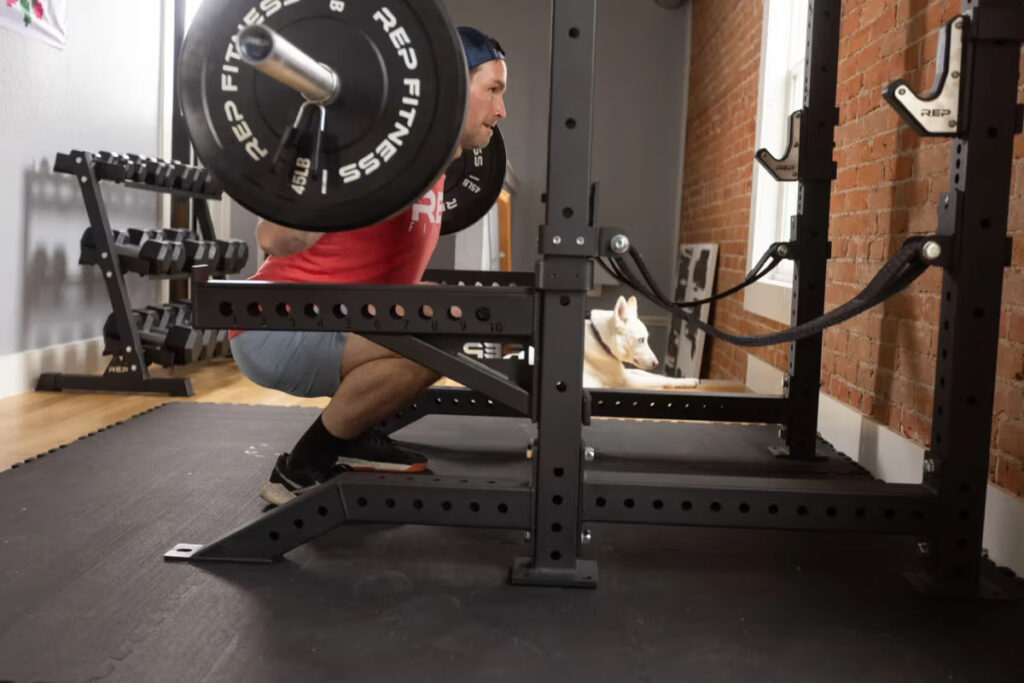
Power Rack We Recommend: T-3 Series Power Rack
Titan Fitness offers us a customizable, high-quality, and durable power rack with its T-3 series. This power rack comes in custom colors; it has a pull-up bar and standard j-hooks, and thanks to its gauge steel built, it’s ready to withstand even the heaviest of lifting sessions. Additionally, it comes at a very good price and with a 1-year warranty guaranteed.
3. Wall-Mounted Rack (From $1200 to $3500 for the Premium Ones)
Wall-mounted racks are an incredibly efficient solution for garage gyms, as they get anchored into the wall, allowing you to get maximum stability while being as efficient as possible with the amount of space you have. In most cases, wall-mounted racks are just as versatile as a full rack but don’t take up as much space.
The only downside to them is that if you want to move them to another part of the room or to a new place altogether, the process is definitely timely and requires some effort from your end.
Wall-Mounted Rack We Recommend: X-3 SERIES SPACE SAVINGS RACKS
The X-3 series space-saving rack gives you all the functionality of a full rack but without requiring that much space. It comes in two different models – a short and a tall one with depth options of 12,18, or 26 inches. It’s again made from gauge steel and can be used for both squatting and upper-body exercises.
4. Foldable Rack (From $500 to $2000 for the Premium Ones)
A foldable rack is essentially a wall-mounted rack with the one difference that it can be folded so that it takes up even less space when not used. Again, in most cases, it has all the functionalities of a full-mounted rack but without requiring that much space.
The only true downside of foldable racks is that they’re a bit difficult to build and mount, along with the fact that it can be super time-consuming to move them if you want to change the way your gym looks or if you’re simply moving to a new location.
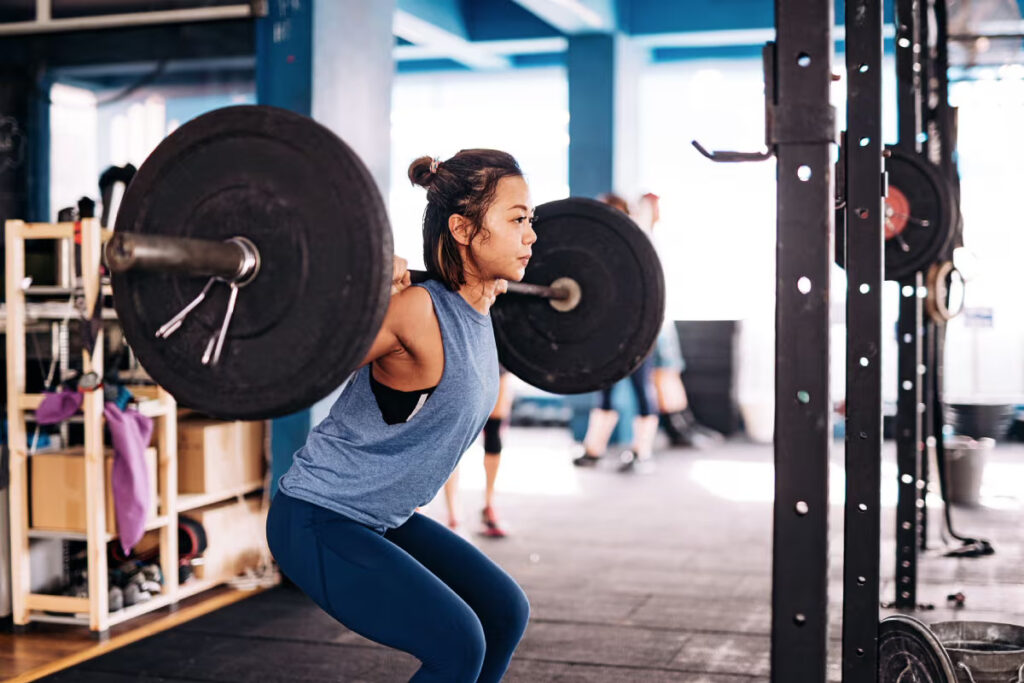
Foldable Rack We Recommend: RML-3WC FOLD BACK WALL MOUNT RACK
We always expect the best from Rogue Fitness, and in this case, we have it with their foldable rack. It comes in more than five different colors, can be folded inward or outward, and has all the functionalities that their standard wall-mounted rack has while being even more space efficient. It’s also super easy to install thanks to its hinge-and-pin system and thinner steel, but just as durable as the other models.
5. Combo Rack (From $1000 to $4000 for the Premium Ones)
A combo rack is a super versatile piece of equipment, ideal for the training style of powerlifters, as it can be adjusted for both bench presses and squats. Thanks to its versatility, the combo rack is also an appealing solution for those that want to build a home gym and save both space and money, as it combines two pieces of equipment in one.
The main downsides of combo racks are that it takes a while to learn how to use them, and they’re also not suitable for pull-ups and other kinds of upper body exercises in comparison to the other types of racks we discussed.
Foldable Rack We Recommend: IPF Competition Combo Rack
The Eleiko competition combo rack is a great piece of equipment that’s durable and with a new design that improves the experience for the lifters. It has a special support arm tilt mechanism that makes it easier to operate and provides increased safety for both lifters and loaders.
Along with that, it has safety arms that give the user more space and specific padding for increased comfort. The only downside to it is that it’s definitely on the expensive end when it comes to home gym equipment.
6. Rig (From $2000 to $4000 for the Premium Ones)
You can think of rigs as multiple power racks all lined up together. They’re essentially training stations that consist of a number of rig uprights combined with bars and crossbeams that connect them. Rigs come in various sizes and shapes and can be adjusted depending on your needs.
The biggest benefit of rigs is that they can easily be customized. However, they’re more suitable for commercial or fitness gyms, where many people will need access to a rack. They’re definitely not the best option for a garage or home gym, as they take up a ton of space.
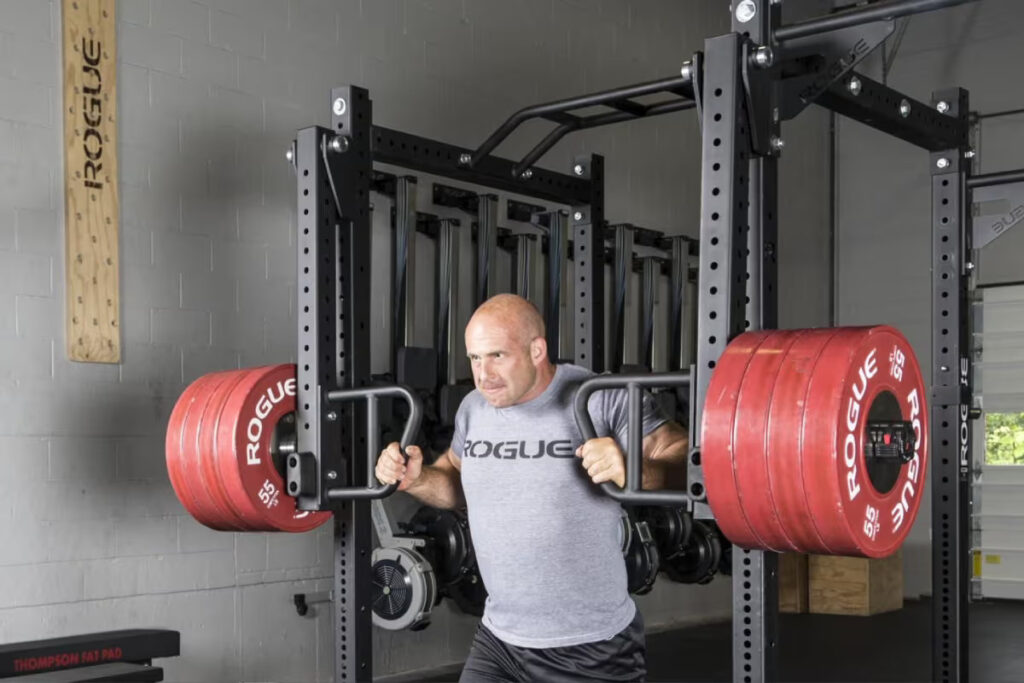
Foldable Rack We Recommend: MONSTER LITE RIG 2.0
The Monster Lite Rig 2.0 is yet another piece of equipment by Rogue Fitness, and it’s a great one. It’s well-suited for gyms and large training facilities and can easily turn into 2-6 bench/squat stations and 6/14 pull-up ones. It’s made from highly durable steel and is available in four lengths (10’,14’,20’,24’) and in various colors.
How Much Do Used Squat Racks Cost?
Typically, you can find used squat racks for half the price of a new one and sometimes for even less. The starting price usually is around $50-100 for a bare-boned squat rack and goes up to $2000 for a used combo rack. With that said, choosing to go for already used equipment poses the following risks:
- It may be malfunctioning
- It has a shorter lifespan
- You have no warranty if it breaks and needs repair
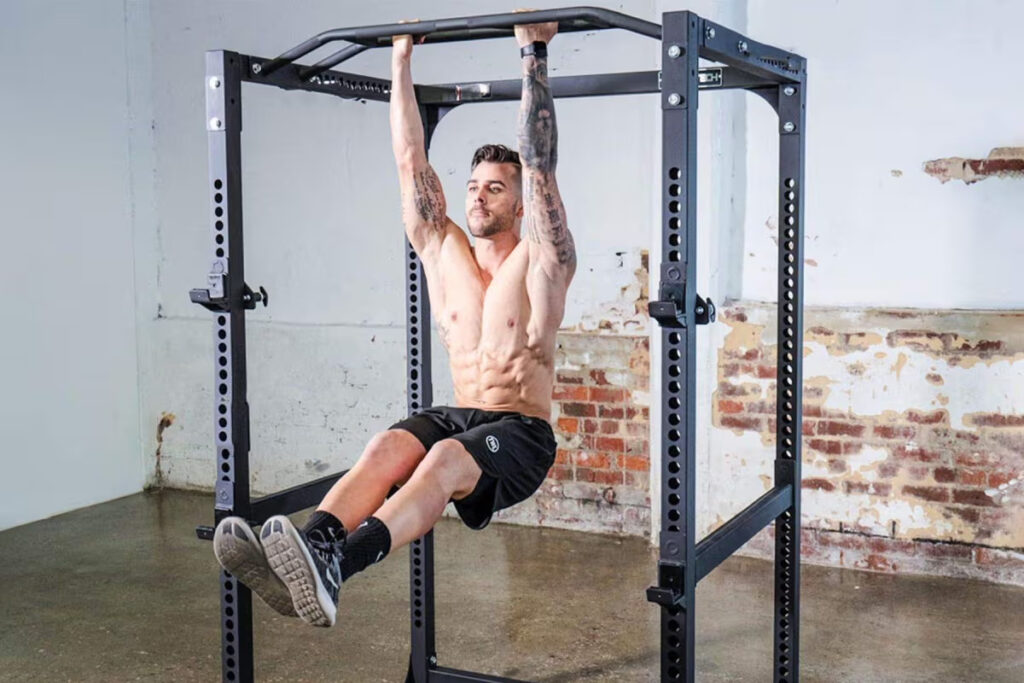
Additionally, if you found the equipment online, but can’t actually see and test it, then you’re exposing yourself to the risk of getting a usable rack. That’s why our advice would be only to buy used squat racks from owners you know and trust and that you’re always 100%, they’re working properly before paying hundreds of dollars for them.
FAQ
Is a Squat Rack Worth It?
A squat rack is 100% worth it as it enables you to train multiple parts of your body more effectively and perform different exercises with more weight.
Is It Worth Getting a Squat Rack at Home?
If you’re planning on training frequently and you’re already used to lifting weights, then getting a rack for your home gym is worth the investment. It’s the best way to continue training effectively and with considerable weights while being at home.
In Conclusion
The squat rack is a necessary, but expensive piece of equipment. Depending on the model, the prices can go from $200 to $10,000 dollars; however, one can find cheaper pre-owned options if need be. With that said, we consider the squat rack to be a must-have piece of equipment for any gym, and we’d like to get your opinion on which model you believe is the best for garage or home gyms. Let us know in the comments below.
Also read:
- Power Rack With Smith Machine
- Squat Rack Attachments
- Power Rack Accessories
- Smith Machine Vs Squat Rack
- Weight Rack for Home Gym
- Squat Rack Types
- Best Squat Rack
- Best Smith Machine
References:
- What Muscles Do Dips Work? // Aleanlife: https://www.aleanlife.com/what-muscles-do-dips-work/
- The Most Versatile Home Gym Equipment // Homeworkin: https://homeworkin.ca/the-most-versatile-home-gym-equipment/
- The Most Versatile Home Gym Equipment // Menshealth: https://www.menshealth.com/uk/gym-wear/g33623673/best-home-squat-rack/
- 18 Types of Squat Racks Explained: Complete Guide // Powerliftingtechnique: https://powerliftingtechnique.com/types-of-squat-rack/
Why Trust Us?
With over 20 years in Olympic Weightlifting, our team does its best to provide the audience with ultimate support and meet the needs and requirements of advanced athletes and professional lifters, as well as people who strive to open new opportunities and develop their physical capabilities with us.
By trusting the recommendations of our certified experts in coaching, nutrition, dietology, and sports training programming, as well as scientific consultants, and physiotherapists, we provide you with thorough, well-considered, and scientifically proven content. All the information given in the articles concerning workout programming, separate exercises, and athletic performance, in general, is based on verified data. We ensure that you can rely on our professionals’ pieces of advice and recommendations that can be treated as personalized ones which will benefit you and fully meet your needs.
The product testing process is described in more detail here
Author: Ihor Shymechko
Pro Olympic Weightlifter, Coach
Best Results: Snatch – 208 kg,
C&J – 240 kg
Ihor has been a professional weightlifter since 1996, boasting over two decades of competition experience. His notable achievements include clinching the European Championship in 2009 and securing a silver medal in the 105kg division at the Senior World Championships in 2011. Ihor represented his country in the 2008, 2012, and 2016 Summer Olympics. After retiring from competitive weightlifting, he transitioned to coaching, leveraging his vast experience to guide athletes who now compete on both national and international stages.

